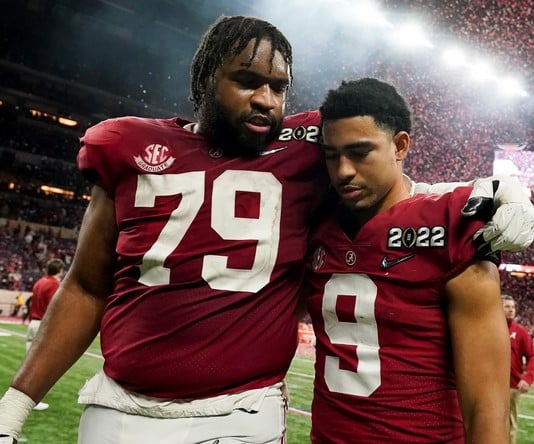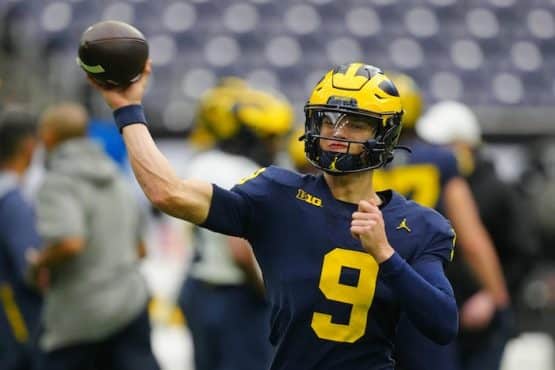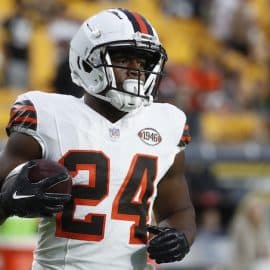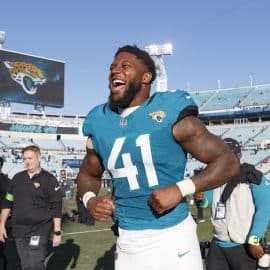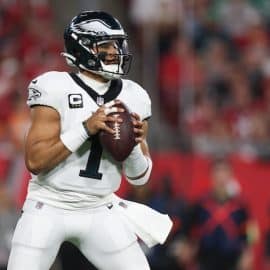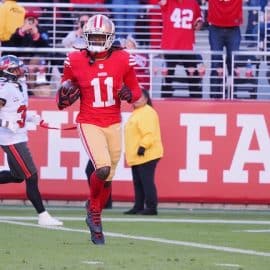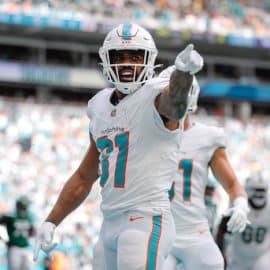As the NFL Combine kicks off on February 28, scouts and teams are eager to measure the physical attributes of this year’s quarterback prospects, including the highly touted Bryce Young. While some may question the importance of measurements like height, weight, hand size, and wingspan, many teams believe they are crucial for evaluating a quarterback’s potential.
Measurements Important to Young and Other QBs
Bryce Young, the former Alabama Crimson Tide quarterback and college football standout, will not be throwing at the combine, making physical measurements even more important for him.
Teams will be analyzing his height, weight, hand size, and wingspan to determine if he has the physical tools to succeed in the NFL. Regardless of that, he is currently the favorite with top US sportsbooks to be the first pick in the 2023 NFL Draft.
At just a reported 6-foot tall, Young is short for an NFL quarterback, and there are many that believe that Young will measure short of that number at the Combine. Other projected first round quarterbacks like CJ Stroud at 6-foot-3, and Anthony Richardson at 6-foot-4 are more stereotypical NFL QBs in terms of height. However, the game is evolving and Young’s ability to make plays with his legs should make him a valuable commodity.
Bryce Young's height measurement is really going to be the highlight event of the NFL offseason 😂
— 𝕁𝕖𝕣𝕖𝕞𝕪 😤 (@HtownJ99) February 25, 2023
However, many NFL teams still believe that these physical attributes are vital for quarterbacks, especially those who are projected to be first-round picks.
NFL Loves Big-Handed Tall QBs
Hand size, in particular, is a highly scrutinized metric, as larger hands are thought to help quarterbacks grip the ball better and potentially make them less prone to fumbles. Quarterbacks with smaller hands may struggle with ball control and may not be able to make certain throws due to a weaker grip.
Height is another crucial factor that teams consider when evaluating quarterbacks. While taller quarterbacks can see over the offensive line and make throws that shorter quarterbacks may not be able to make, they may also struggle with mobility and agility.
Not only do we get hand size twitter at the combine this week but Bryce Young height watch is going to be something
— Offseason Chopz (@Pchopz_) February 27, 2023
On the other hand, shorter quarterbacks may have more agility and be better at escaping pressure, but may struggle to see over the offensive line and make throws downfield.
However, while physical measurements can provide a rough idea of a quarterback’s potential, they do not necessarily translate to on-field success. Some of the most successful quarterbacks in the NFL, such as Russell Wilson and Drew Brees, have been on the shorter side. Meanwhile, others with larger hands, like Jared Goff, have not lived up to their draft hype.
Arm Talent, Decision Making, and Football IQ Count Too
Ultimately, if quarterbacks don’t measure up physically, they will have to impress scouts with other skills, such as arm talent, decision-making, and football IQ. Teams will be looking for quarterbacks who possess a combination of physical tools and intangibles that translate to success at the next level.
While physical measurements like height, weight, hand size, and wingspan are important factors for evaluating quarterbacks, they do not necessarily determine success in the NFL. As the combine gets underway, teams will be looking for the right combination of physical tools and intangibles that project success at the next level.
For Bryce Young and other first-round quarterback prospects, these measurements will be key factors in determining their draft stock, but ultimately, it will be their on-field performance that truly matters.
Add The Sports Daily to your Google News Feed!
